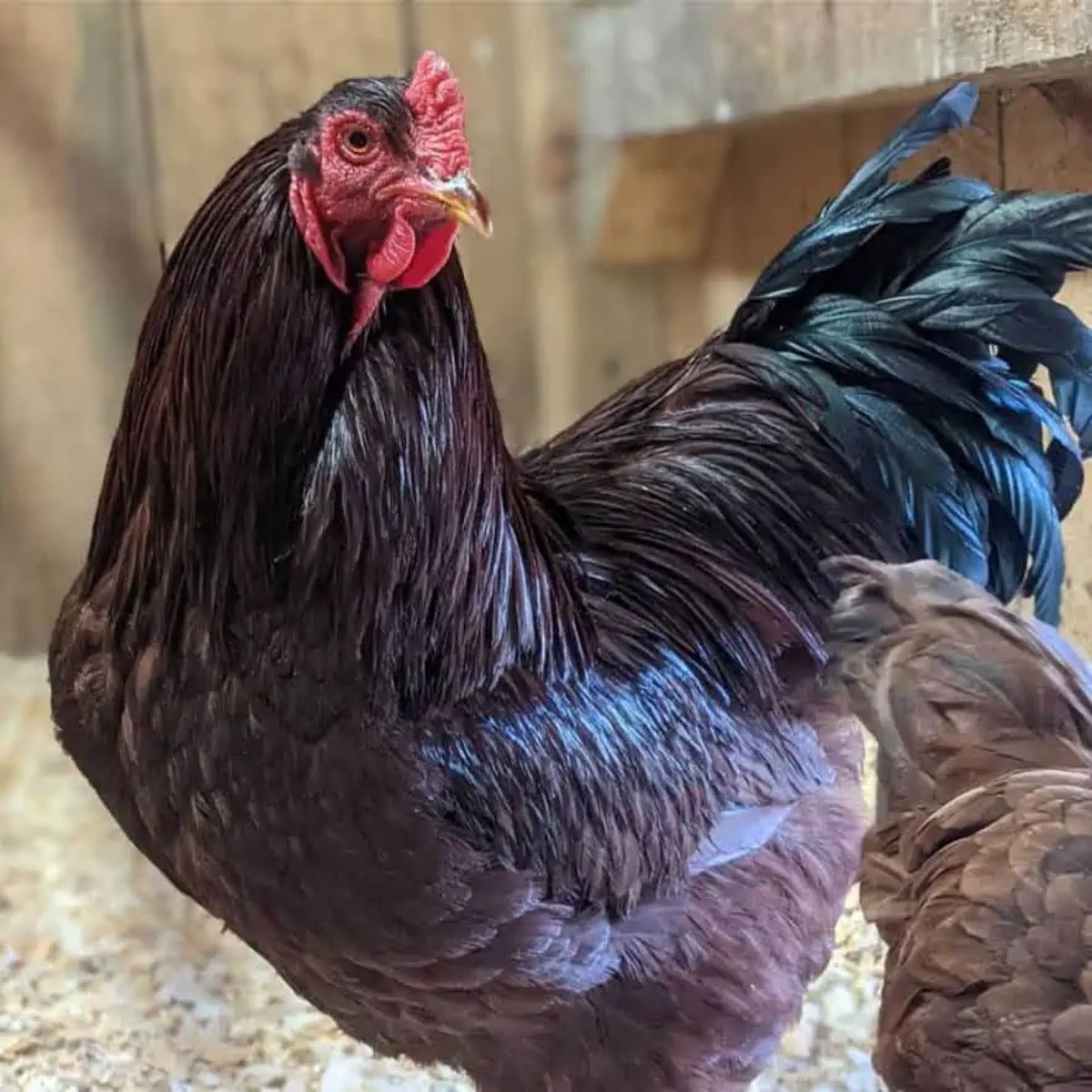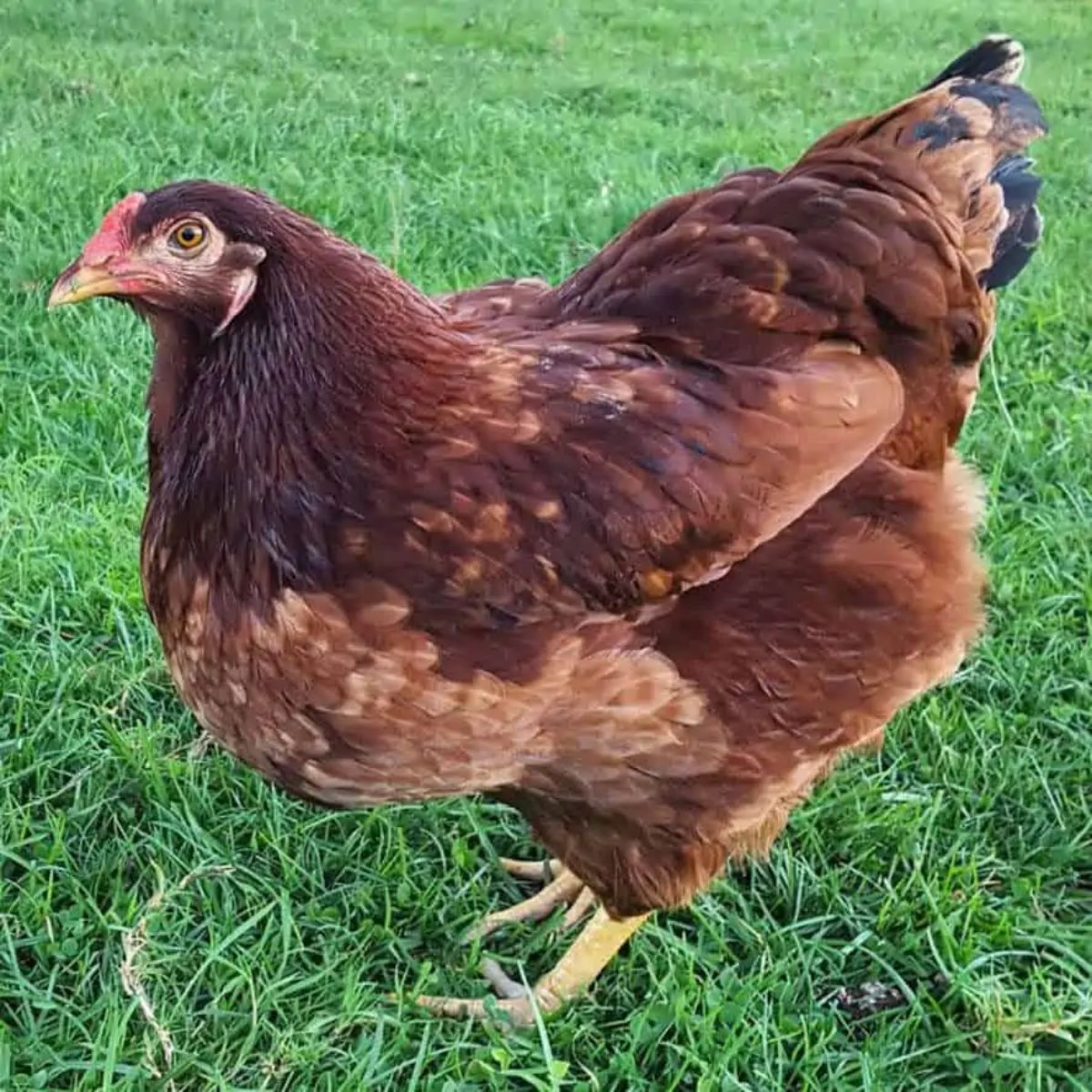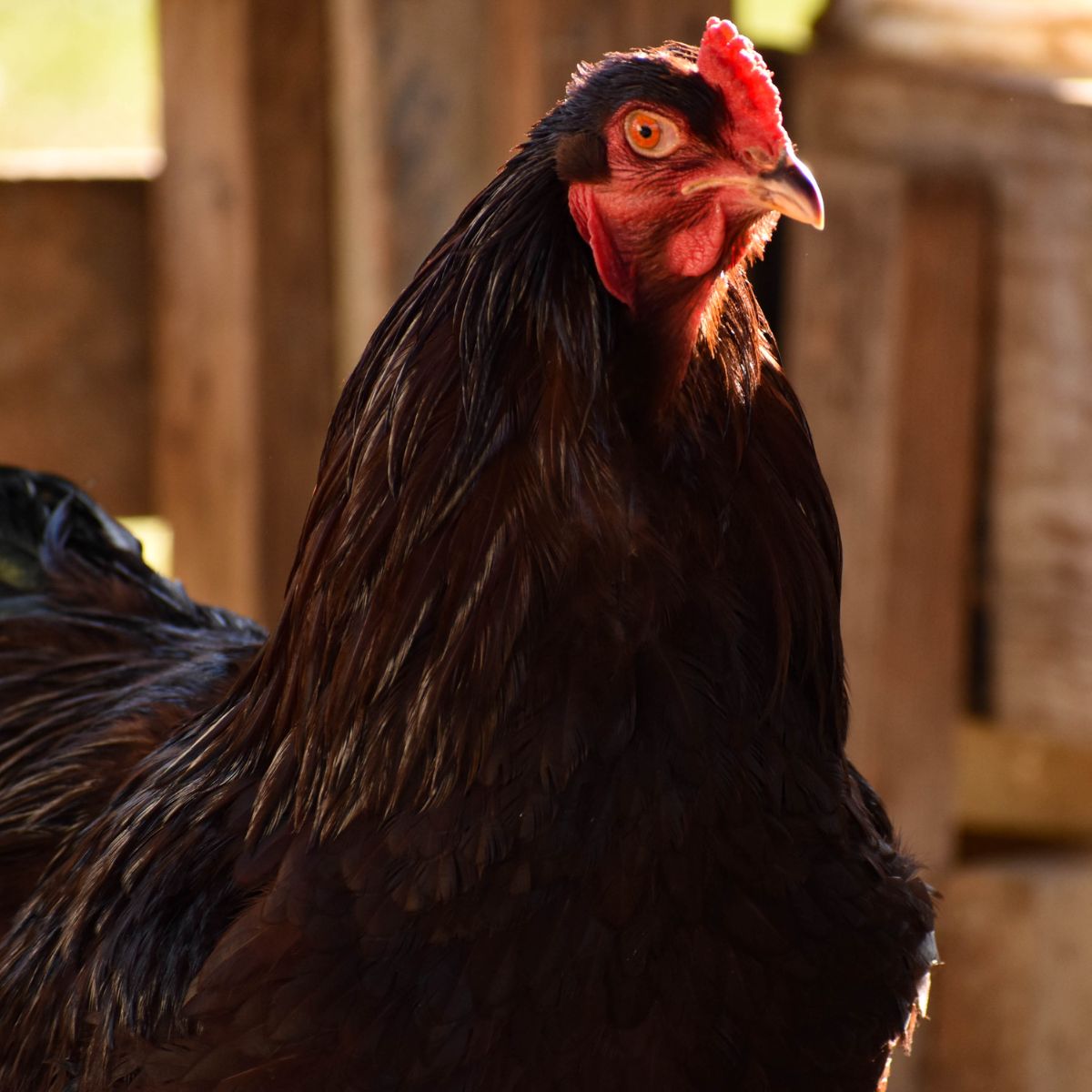The Buckeye chicken is an American classic, originating in Ohio at the turn of the century. They are a dual-purpose chicken that excels at both laying eggs and meat production.

They are extremely friendly and show almost no fear of humans. This makes them a great pet or 4-H project for children. They are active and require lots of room to roam, so they are an ideal free-range breed.
Buckeyes are also known to be cold hardy. The breed was developed in the cold winters of Ohio, so they do well in the cold as well as the heat of summer. Hens will often continue laying when the temperature drops.
Jump to:
How to Buy Online Buckeye Chickens

Buckeye Chicks As low as: $3.50 - Read reviews
Buckeye Chicken Breed Quick Info
Buckeye Chicken Description
| Buckeye Type/Size: | Standard |
| Feather Color: | Mahogany |
| Leg Type: | Clean |
| Leg Color: | Yellow |
| Skin Color: | Yellow |
| Buckeye Ease of Raising/Keeping: | Easy |
| Buckeye Special Care Needs: | No |
| Is the Buckeye breed a common, rare, or protected breed of chicken? | Under conservation “threatened” status |
Buckeye Use
| Meat | Yes |
| Eggs | Yes |
| Dual Purpose | Yes |
| Buckeye Temperament: | Active, friendly |
| Buckeye Ability/Likelihood to Free Range: | Yes |
Buckeye Egg Production
| Egg Color | Brown |
| Egg Size | Medium-Large |
| Estimated Number of Eggs Per Year | 150-200 |
| Likeliness to Brood Eggs/Raise Chicks | Medium |
Buckeye Meat Production
| Dressed Weight Male | 6 ¼ lbs. |
| Dressed Weight Female | 4 ½ lbs. |
Buckeye Climate Tolerance
| Heat | Good |
| Cold | Excellent |
Buckeye Age to Maturity
| Number of Months to Reach Full Size | 6 Months |
| Number of Months to Start Egg Laying | 6 Months |
| Number of Weeks/Months to Reach Meat Harvest Size | 6 Months |
Buckeye Size at Maturity
| Male | 9 lbs. |
| Female | 6 ½ lbs. |
Origins of the Buckeye Chicken

The Buckeye was developed in Warren, Ohio, by Nettie Metcalf. They are the only American breed to be developed solely by a woman. Buff Cochins, Barred Rocks, and Black-Breasted Red Game were crossbred to achieve the Buckeye.
The breed came to be a popular choice for small farms in the midwest. It rivaled the east coast’s Rhode Island Red when it came to productivity and hardiness. However, when the poultry industry became commercialized in the mid-20th century, its popularity declined.
Thanks to dedicated breeders and enthusiasts, as well as support from organizations like The Livestock Conservancy, they are making a comeback in the chicken world.
Some Things to Know About the Buckeye Chicken

Buckeyes are often confused with the similar-looking Rhode Island Red chicken. But many of their features are distinctive. For example, they have a short, broad frame with a sloped appearance.
Their plumage is darker than the Rhode Island Red, and you will find slate-colored feathers under the plumage on their backs. They also have beautiful black-tipped tails.
Their face, earlobes, and wattles are bright red, and they have yellow legs and skin.
How Easy is it to Keep Buckeye Chickens?

The Buckeye chicken is a great breed for novice and experienced chicken owners alike. Their friendly disposition is hard to resist - they will often approach you before you approach them, especially if you have food.
One unique characteristic that separates Buckeyes from other breeds is their ability to hunt mice. Owners often compare them to cats, as they will ferociously track down any pesky rodents.
They do very well in the cold due to their pea comb. Hens will often continue laying during the winter months.
Buckeye hens may go broody. If they do, they make excellent mothers.
Special Care and Considerations for Buckeye Chickens
For the most part, Buckeyes are healthy, hardy chickens.
They are extremely active and prefer an open field to a confined coop. They are an ideal breed for free ranging, as they love to wander and forage insects and seeds. However, they are not the most predator-savvy birds, so be sure to keep them in a fenced or otherwise protected area while they roam.
If you live in an urban setting or close to neighbors, be aware that Buckeye roosters can be particularly noisy. They may also be aggressive during the breeding season.





